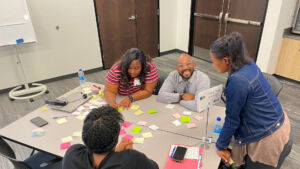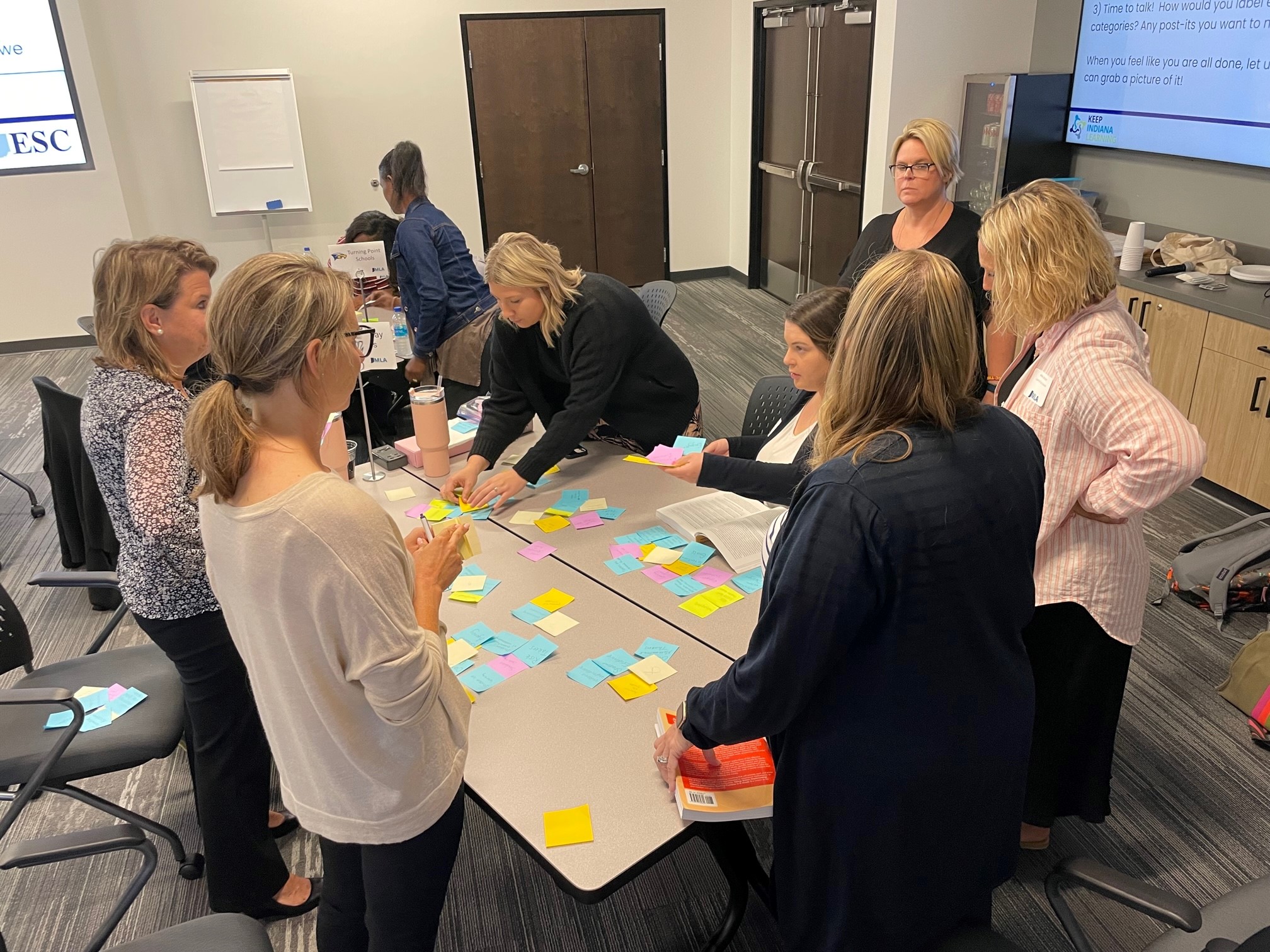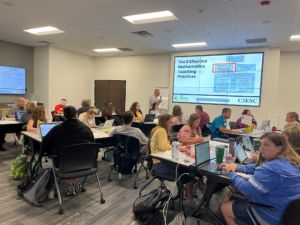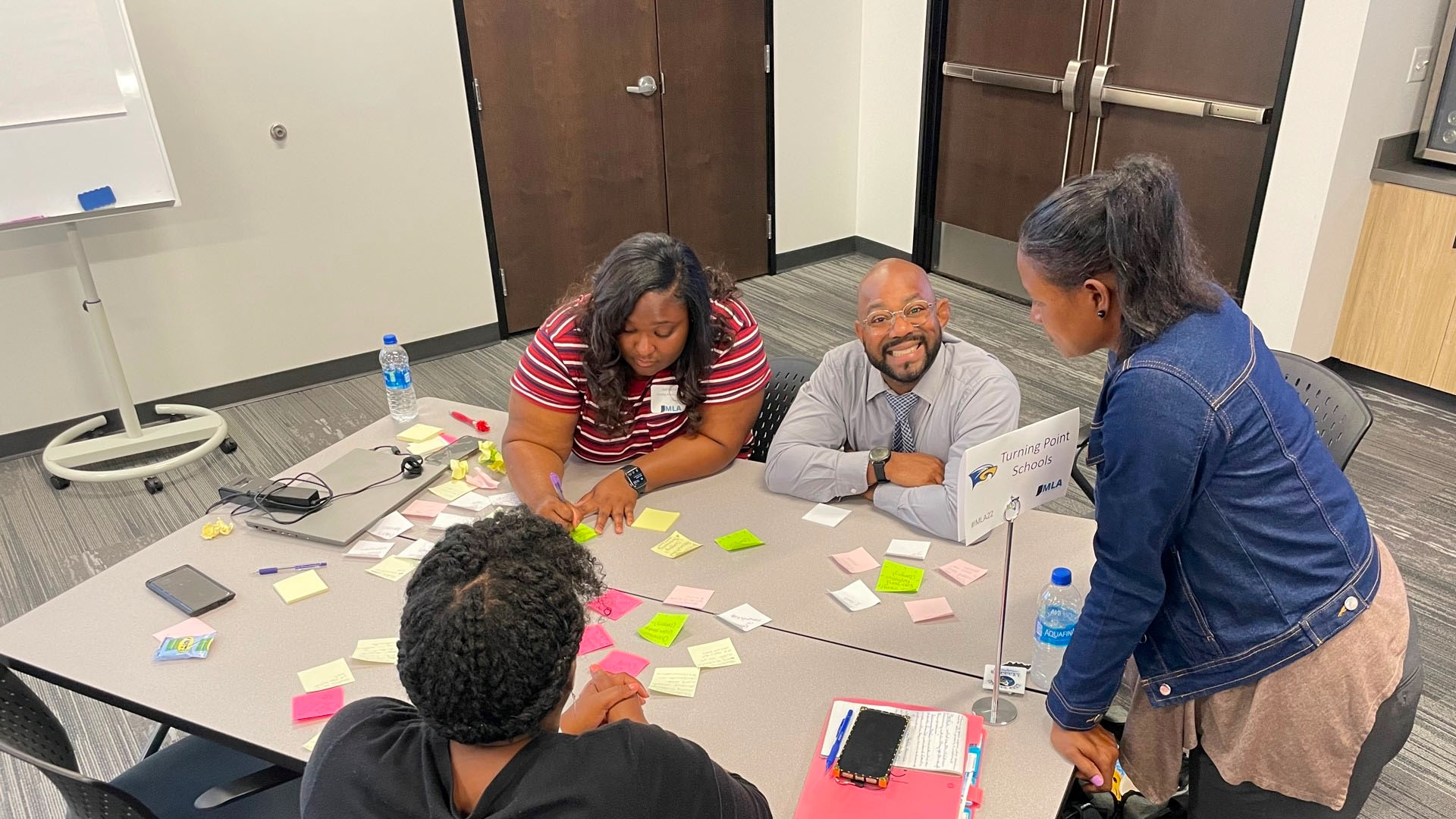
For the past 5 summers, I have had the incredible opportunity to be a part of the Indiana Math Leadership Academy (IMLA) hosted by the Hoosier Association of Mathematics Teacher Educators (HAMTE) and Keep Indiana Learning. IMLA brings together my two passions: math education and instructional leadership, and the thinking and learning that occurs during our 3-day summer sessions always has my head spinning when it’s over! This year, we had 63 participants from all over Indiana that were engaged in focusing on what it means to be a leader, the 8 Effective Mathematics Teaching Practices, and math content knowledge. In the end, when thinking about the teaching and learning of mathematics, schools need great instructional leadership, and teachers and leaders need to understand what the math is and how it should be taught. That said, instructional leadership is a crucial component to schools running successfully – no matter the content area. There are a lot of books, articles, and videos one can read/watch about instructional leadership. After this summer’s IMLA sessions, I rewatched and reread a few that might be worthy quick reads. Check out John Hattie’s thoughts on Instructional Leadership and Peter Dewitt’s 4 Components of Instructional Leadership. Take a minute to read about what transformative learning theory is and how it connects to how adults learn, and read this quick NASSP article, “10 Strategies to Improve Instructional Leadership.” AND read below to reflect on three things I think are crucial to consider when thinking about impactful instructional leadership.
When there are goals in a school improvement plan, everyone in the school community should be privy to what they are and collectively work to achieve success!
What’s your plan? Decide, stick to it, and create opportunities for everyone to do the same!
School improvement plans have been around for a long time. As administrators, there are a lot of forms that are “required” to be filled out and submitted to indicate what your goals are, what your school did to work towards said goals, to evaluate whether or not the goals were made – and some of the forms can feel redundant, laborious, and frustrating. But what if we put a new spin on this required process? Consider using the School Improvement Plan (SIP) as a tool for engaging students, teachers, administrators, and other school community members in active learning and growth throughout the entire year.
- Write your SIP with grade level leaders, instructional coaches and/or department chairs. Allow for input from multiple perspectives to ensure it reflects the actual learning needs in your building.
- Triangulate your data to determine and prioritize needs. Test scores are important, sure. But what about the learning that occurs all the OTHER days of the year? What student work, teacher observations, and formative assessments are you using to determine need? Include these forms of data in writing your goals. There are significantly more days of learning and opportunities for assessment that occur outside the assigned standardized testing days.
- Inform the teachers and school community on what the goals are! These are not secret documents; rather, when the are goals in a school improvement plan, everyone in the school community should be privy to what they are and collectively work to achieve success!
- Help teachers connect their yearly goals to the school’s goals. What can they do in their classrooms to continue to grow as teachers, and how can that growth contribute to overall school growth?
- Create professional learning opportunities that relate specifically to the SIP. Plan these in advance and make them non-negotiables. If new ideas for professional development come to you during the year, WAIT. Throwing a new idea in the middle of the year confuses everyone about what the priorities actually are and becomes “another thing they want us to do.” If you want professional learning to be viewed as something that is an opportunity vs. something that is mandatory, you have to be intentional with what you ask teachers to do.
- Stay focused and stay intentional. Growth takes time. A lot of time. And that is ok.

All members of the school community are in their very own phase of learning, and every member of the community has the ability to learn and grow.
School communities consist of so many different players, and every single one of them is on their very own journey of growth. As instructional leaders, it is our responsibility to find out where they are, what they know, and figure out how to move them forward. Classroom teachers are instructional leaders, and it is their responsibility to find out what their students know and make plans and decisions on what will be taught next. School administrators and instructional coaches must consider where teachers are in their process of learning and design intentional experiences to help move them forward. Families and guardians at home had their own experience with schooling, and that is the knowledge they are bringing with them as they support their learners. As schools, what are we doing to build bridges, not barriers, between home and school? As instructional leaders, we must create a culture where every child has the opportunity to learn. To do so, we must believe they all can, and we must commit to understanding the process is different for all. There is no one size fits all prescription for individual growth.
As schools, what are we doing to build bridges, not barriers, between home and school?
Acknowledge the good.
If nothing else, acknowledge the good. There is good in everything. Literally everything. If, as an instructional leader, you need to take a moment to figure out what that is, take that moment. My last year of full time teaching was an incredibly chaotic year. I was a mom of a brand new baby and 2 year old, a founding teacher at a brand new charter school, and teaching a multi-age classroom of 4th, 5th, and 6th graders who had come from a myriad of learning experiences across the city. Every day felt so hard, and I wanted to give up on a very regular basis. One day, in the midst of thinking, “I cannot do this. This is not going to work, “ I decided to shift my narrative to, “SOMETHING good happened in this room today.” When I gave myself permission to highlight the good as opposed to marinating in the bad, my entire disposition changed. My students even noted that I had “changed.” I remember one student declaring, “Ms. Courtney, you changed. You are so much more calm.” As an instructional leader, you want to be approachable. You’re not going to be approachable if you’re always pointing out the bad and what’s not working.

The power of focusing on what IS working and what the GOOD is, is a completely underused tool. If we want all to find the joy in the learning that is occurring, we must focus on the successes we are having and how we can build on that success. Kids need to hear about what they ARE doing to find correct answers; teachers need to hear about something positive their administrators see, and families need to hear about how their learners are succeeding in school. Imagine a school culture where students and teachers know they are going to muddle through the challenges by thinking about what’s working and how they can build off successes to conquer challenges. That is a narrative shift that, from which, every single member of the school community will benefit. One could read and read on the topic of instructional leadership – and there is a lot to consider as we continue to embark on the journey of creating schools where all children are successful. The thing we cannot forget is that we are all instructional leaders, but none of us is the expert at everything. Therefore, consider creating a culture where everyone is committed to the same goals, understands that each member of the school community is on their own journey in learning, and is committed to acknowledging what is working. The goal is to get everyone on the same page and empower them as members of the learning community. The work doesn’t end there, but it is the beginning of leading schools, teachers, and children to greatness.
Resources
Please login or register to claim PGPs.
Alternatively, you may use the PGP Request Form if you prefer to not register an account.



